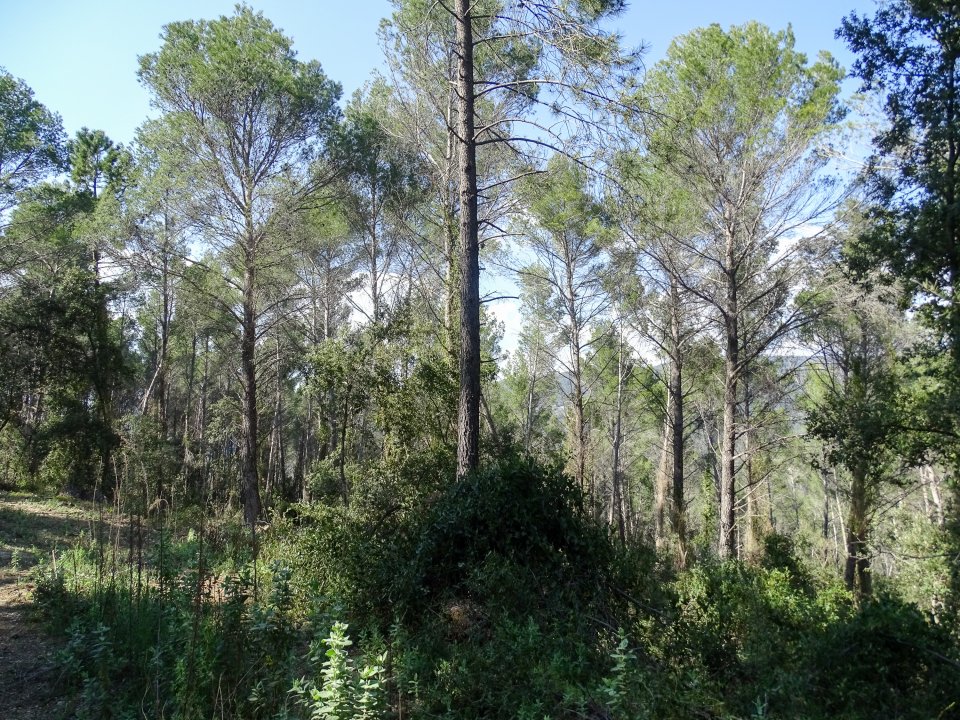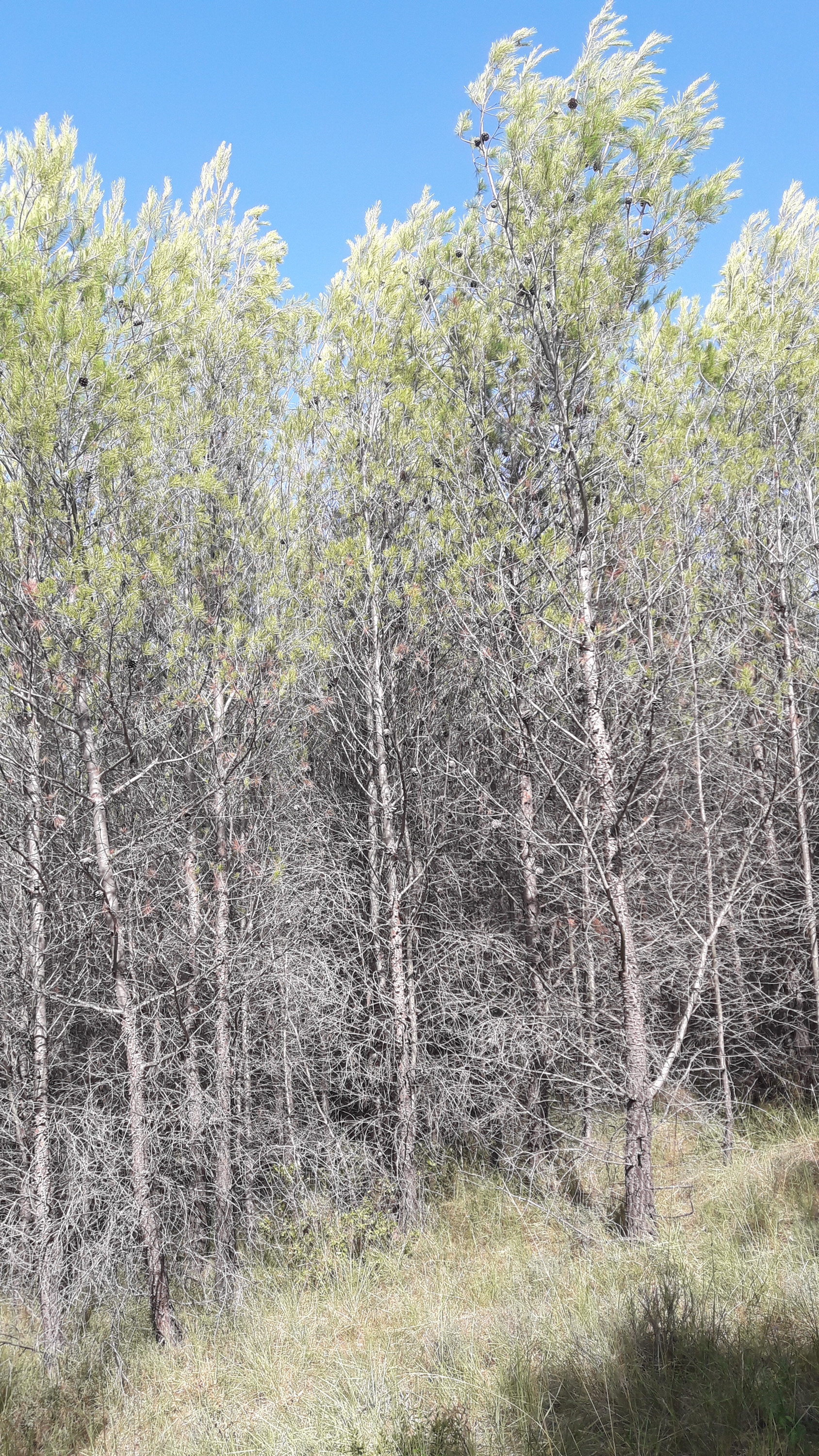
Quantify the carbon footprint of different Alepo Pine forestry scenarios (biomass and soil capture and wood products storage) in order to compare in terms of climate change mitigation.
Identify amongst the favourable forest management practices those that:
- Boost management,
- Are geared towards forest quality,
- Minimize risks,
- Ultimately allow Mediterranean forest management sector development participating the rise of the carbon market.
What are the factors and causes underlying the problematic?
Forestry must take into account the climate change mitigation and actively participate throughout practices improving sustainable carbon capture and storage.
Alepo pine is an omnipresent and symbolic tree species of the Mediterranean region, yet undervalued on the forestry aspects.
Mediterranean forestry sector could integrate those specific species managements improvement within a sustainable development approach.
Several management scenarios are modelled in order to estimate their average carbon stock, according to different time paths. From the forest production data (tables and growth models), carbon stock in forestry system is assessed with the software CO2FIX. Different technological itineraries suggested answer to the fertility variability of stations and allow the comparison of the choices effect in forest management: date, intensity and numbers of cuts, or duration of rotation particularly. Diverse hazards can also be simulated (forest fires, prematurely clear cuts) in order to study the impacts. It is then possible to compare the carbon footprints of a baseline scenario to an improved management scenario.
Amongst the tested scenarios, it seems beneficial to promote, in Alepo pine forests, long terms technological itinerary with several thinning before final harvest rather than itinerary voluntarily shorten or through the simulation of forest fire.
Reasoned thinning (≤ 40 % of the volume) also allow a greater carbon sequestration while limiting understory vegetation development, thus the forest fire risk.
To showcase carbon aspect can make silvicultural operations attractive while the latter address other issues. This approach can mobilize the forestry sector and possible funding sources to trigger economically unprofitable but necessary intervention.
(+) General interest of carbon sequestration and fight against forest fires
(+) Interest of the forest sector for this type of silviculture, and particularly for the building industry based on sustainable and local wood materials.
(+) Funding enabler through the « carbon » aspect and the others co-benefits
(-) Lack of risks and co-benefits integration in modelling
(-) Lack of data which is limiting modelling
Implementation of pilot projects with sylvicultural operations of forestry management or forest stand improvement, thanks to external financial contributions.
Progressive craze for these silvictulures, sustainable management of the resource, and use of this wood contributing to the local economy.
Work on formalised and established assessment method of the carbon benefits in Alepo pine management, and registration to the Low-Carbon Label.
Further information
Joël Perrin © CNPF

Mael GRAUER © CNPF
